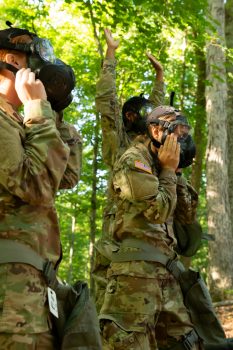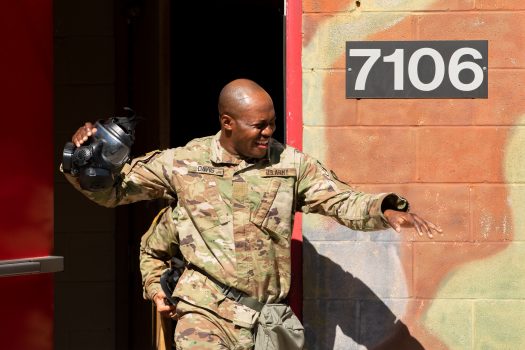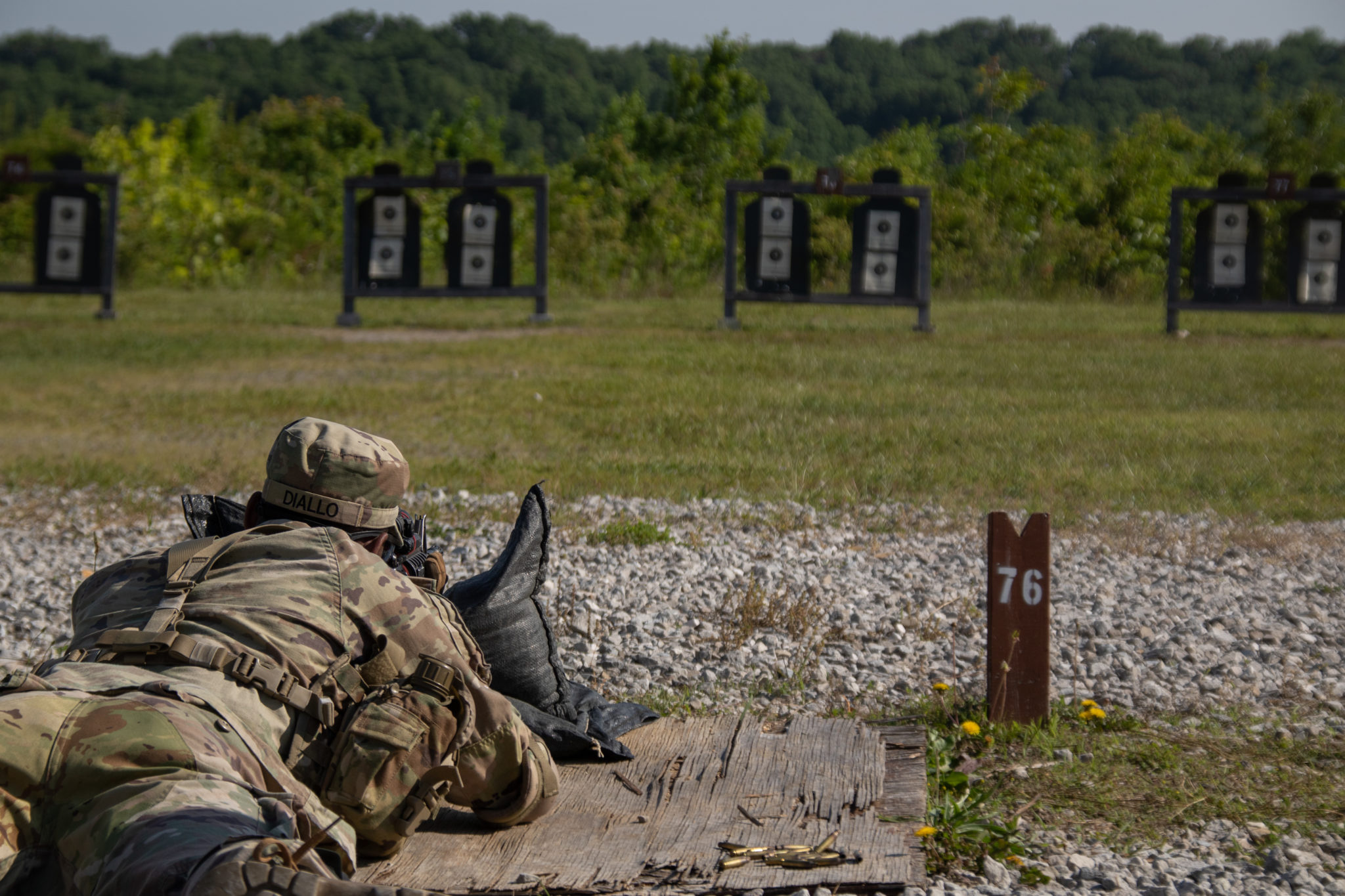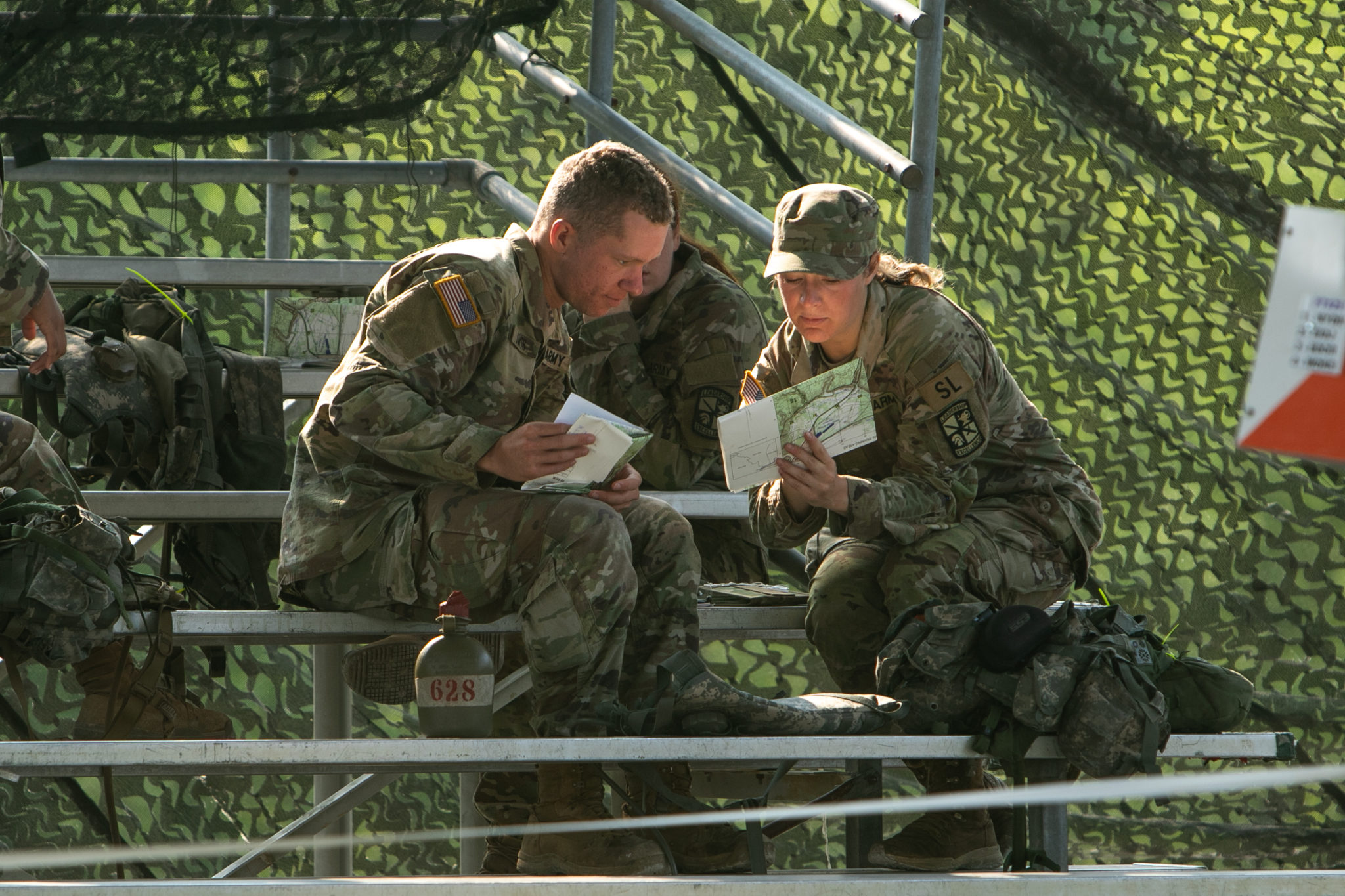
“Gas! Gas! Gas!” yelled Cadre. Much like a boxer taking a surprise upper-cut, Cadets scrambled to react. They only had nine seconds to let technique take over.
“It punches you in the face as soon as you take that mask off,” said Cadet Jakob Jasperson of Pittsburg State University, Kansas. “My face burns, almost instantly you start crying, and your nose, it just runs so fast … you start coughing, and you can’t control your breathing.”
Cadets of 3rd Regiment Advanced Camp were trained to be ready for the worst on the morning of June 17th, 2021.
CBRN (commonly pronounced “see-burn”) is the name of the Army’s Chemical, Biological, Radiological, and Nuclear safety training. It is vital that anyone going into combat be prepared for this type of situation. Less commonly expected on the modern battlefield, these types of weapons can still be very dangerous if employed.
“There are things out there that can kill you if you breathe them in,” said CBRN specialist, Sergeant Jill Wise. This training coaches Cadets to react quickly in a contaminated environment and help guide the people under them to safety.
Cadets are trained to be proficient with the M50 Joint Service General Purpose Mask which protects their face and airways, as well as Joint Service Lightweight Integrated Suit Technology (JSLIST), a protective set of pants, boots, gloves, and a jacket that they can quickly don over their standard gear.
This gear is more than capable of saving lives, and Cadets gained certainty in it today by putting it to the test.

The Confidence Chamber—a colorfully-painted, concrete building in the woods—was filled with 2-chlorobenzalmalononitrile, an agent commonly known as tear gas.
Once ready, Platoons charged single-file into the Confidence Chamber with their M50 masks on, each Cadet holding on to the one in front of them like a train. After entering, Cadets removed their masks. As they gasped for air, they focused on singing a song in an attempt to control their breath as they walked circles.
After just a short time of being exposed to the gas, Cadets left the building coughing and spitting, while blinking profusely and flapping their arms to remove traces of gas from their clothes.
“We walked in there, didn’t feel a thing at all … as soon as you took off the equipment you could tell right away that there was a lot that it was stopping,” said Cadet Ethan Tangney from the University of Central Florida.
For many Cadets, this was an eye-opening experience about the importance of being prepared. By the time they left training, they were more confident in their gear, their fellow Cadets, and themselves.




